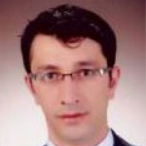
Hidayet Ogras
Work place: Department of Electrical Education, Batman University, Batman, 72100, Turkey
E-mail: hidayet.ogras@batman.edu.tr
Website:
Research Interests: Computer systems and computational processes, Systems Architecture, Information Systems
Biography
Hidayet Ogras received his Ph.D degree in Electrical and Electronics Engineering from the University of Firat, Elazig, Turkey, in 2017. He is currently a research assistant in Batman University and his research interests cover chaos based cryptography and steganography. He is also interested in secure communication systems.
Author Articles
An Efficient Steganography Technique for Images using Chaotic Bitstream
DOI: https://doi.org/10.5815/ijcnis.2019.02.03, Pub. Date: 8 Feb. 2019
Steganography is a science of security technique through invisible communication; hiding secret message into cover objects without any suspicion. Protection of the hidden information from an adversary is the main purpose of any steganography system even if the embedding method is obvious. In this paper, an effective image steganography system based on a least significant bit (LSB) algorithm and chaos is proposed. The proposed method contains a spatial domain technique in which the Logistic map is used for generating chaotic bitstream and bitwise XOR operation which is used to create control bit. Control bit determines whether the LSB of a specific pixel is changed or not according to the secret message. This provides direct manipulation over the pixels of the image with a very low precision hence enhances the system security. In this study, gray image is used as secret message and a larger scale image as cover image. Experimental results demonstrate that the proposed method is very efficient to detect LSB replacement in the algorithm. Moreover, the proposed algorithm is highly sensitive to the stego key parameters due to complex structure of chaos which provides high level of security in the whole system and effectively hides and detects the image information.
[...] Read more.Other Articles
Subscribe to receive issue release notifications and newsletters from MECS Press journals